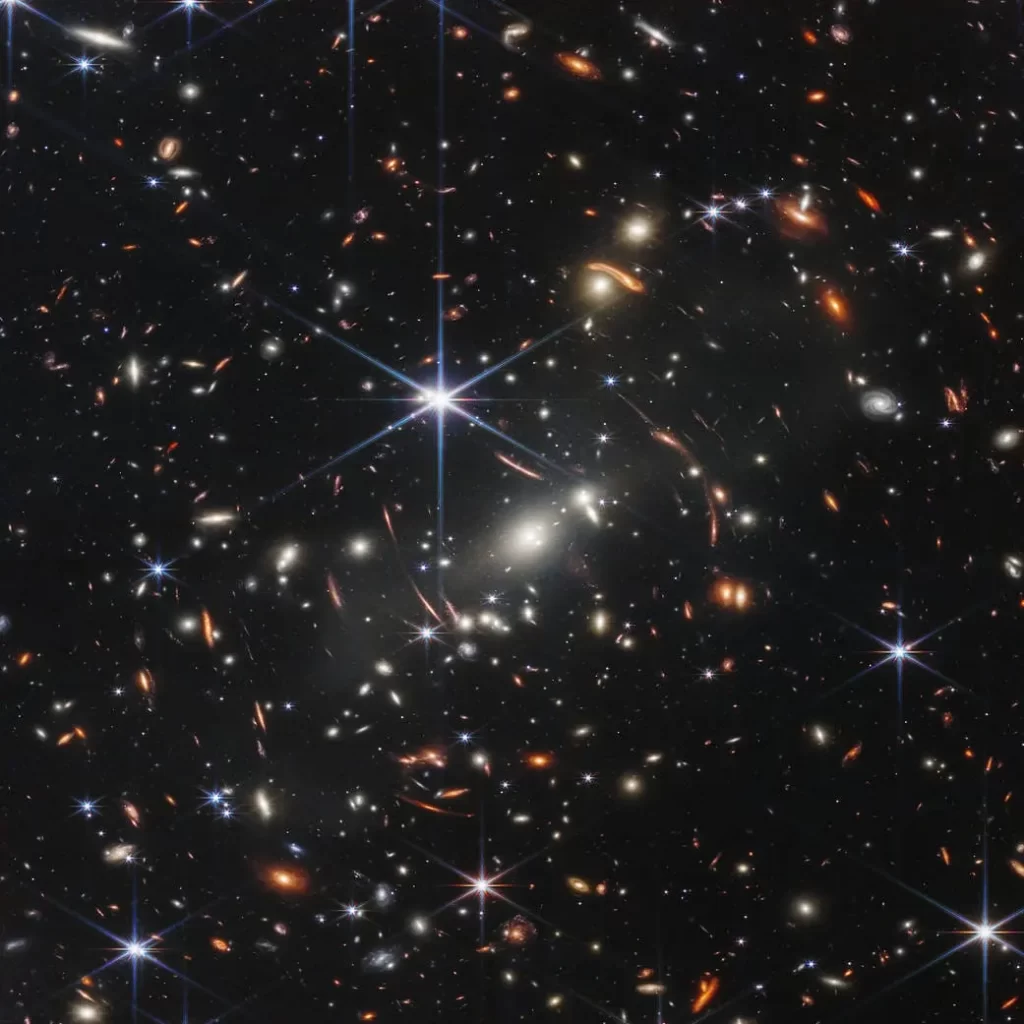The James Webb Space Telescope developed by NASA with its partners, ESA (European Space Agency) and CSA (Canadian Space Agency) has produced the most detailed and Deepest Infrared Image of the distant universe till date. This detailed image of the galaxy cluster SMACS 0723, also known as Webb’s First Deep Field, is thronged with exceptional details.
Thousands of galaxies have appeared in Webb’s perspective for the first time, including the weakest infrared objects ever recorded. This sliver of the vast universe is roughly the size of a grain of sand held at arm’s length by a person standing on the ground.
Webb’s Near-Infrared Camera (NIRCam) captured this deep field, which has a composite of images taken at different wavelengths over the course of 12.5 hours — achieving depths at infrared wavelengths beyond the Hubble Space Telescope’s deepest fields, took weeks to capture.
Why Is This Image So Significant?

The image illustrates the 4.6 billion year old galaxy cluster SMACS 0723. The combined mass of this galaxy cluster acts as a gravitational lens, magnifying significantly more distant galaxies behind it.
Webb’s NIRCam has taken those distant galaxies into focus, showing previously unknown small, dim objects like star clusters and blurry features.
Researchers will soon discover more about the galaxies’ masses, ages, histories, and compositions as Webb hunts for the universe’s first galaxies.
It is one of the first full-color images captured by the telescope. The full suite will be made available during a live NASA TV broadcast on Tuesday, July 12, at 10:30 a.m. EDT.
